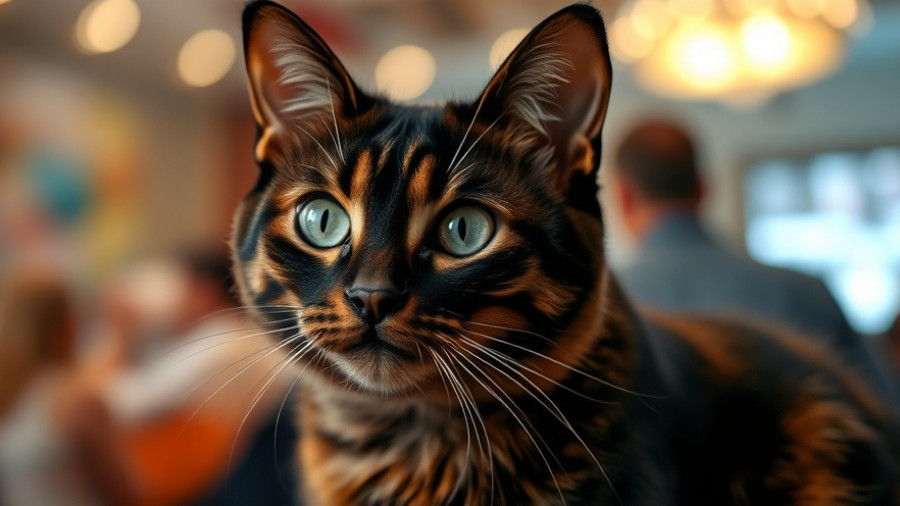
Discover the Singapura: The World's Smallest Domestic Cat
The Singapura cat, renowned for being the world's smallest domestic feline, captivates not just because of its petite size—typically weighing between 4 to 8 pounds—but due to its colossal personality. Some describe this lively breed as 'impish' for its playful demeanor and spunky energy. Contrary to what their small stature might suggest, Singapura cats are quite energetic and require substantial mental stimulation to keep them happy and engaged.
The Roots of the Singapura Cat
Although the Singapura breed officially began to take shape in the United States between the 1970s and 1990s, its origins may trace back to the streets of Singapore. Hal and Tommy Meadow are credited with introducing these charming felines to the U.S., but some sources, including the Singapore Tourism Board, dispute this narrative. They assert that the breed evolved from local street cats, which mingled with Burmese and Abyssinian breeds over time.
Regardless of its beginnings, the Singapura has established itself as a laid-back companion who thrives on affection and involvement in family activities. Its adaptability to both indoor and outdoor settings can enhance the well-being of the pet, provided it has sufficient opportunities to exercise and explore.
A Peek Into the Singapura's Personality
The charm of the Singapura cat isn't just about its size or looks; it lies more in its engaging personality. These curious cats love to be in the midst of action, often participating in household tasks, perching on their human's shoulder, or playfully batting at toys. Known for their gentle but vivacious spirit, Singapura cats form close bonds with their families, making them excellent companions.
However, they aren't necessarily suited for very noisy environments due to their sensitive nature. Singapura cats often showcase a quieter side, preferring serene surroundings where they can thrive and feel secure.
Caring For Your Singapura
When taking in a Singapura, prospective owners need to commit to providing proper care. While this breed does not demand a specialized diet, it is crucial to ensure that they receive a nutrition-packed meal that supports their energetic lifestyle. Regular visits to a veterinarian are essential for monitoring health and preventing potential issues such as dental disease and obesity—a risk for indoor cats who may not get as much exercise.
A significant aspect of Singapura care is maintaining their lively spirit through play. Interactive toys, climbing trees, and engaging games can help channel their energy positively. Regular grooming is a bonus that not only keeps the coat clean but strengthens the bond between owner and pet.
Potential Health Concerns
The Singapura is generally considered a healthy breed; however, owners should be aware of specific health issues that could arise. This includes potential genetic conditions like pyruvate kinase deficiency, which can lead to anemia, and progressive retinal atrophy, a condition that affects vision. Being aware of these concerns can help you take proactive steps in ensuring your cat's long-term health.
Additionally, while Singapura cats boast a life expectancy of 9-15 years, many live longer when provided with appropriate care, a balanced diet, and regular veterinary checkups. Responsible breeding practices are essential to maintaining genetic health, so it's imperative to select a reputable breeder who prioritizes these values.
Embracing Life with a Singapura
Living with a Singapura cat typically involves embracing their spirited nature. Despite their tiny size, their robust activity levels and affectionate disposition offer a lively household dynamic. Whether engaging in a game of chase or curling up on a cozy blanket, Singapura cats promise an entertaining and rewarding companionship.
If you’re considering adding a Singapura to your family, make sure you’re prepared to provide an engaging environment filled with love and companionship. This delightful breed not only enriches your life with joy but also brings a unique charm that’s hard to resist.
In conclusion, whether you're an avid cat enthusiast or contemplating pet ownership for the first time, the Singapura offers a blend of companionship, playfulness, and affection that is distinctive to this beloved breed.
 Add Row
Add Row  Add
Add 


Write A Comment